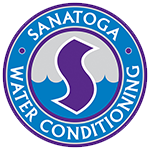Oxidation Reduction Potential (ORP)
What Is ORP? Why Should We Measure It?
ORP stands for Oxidation Reduction Potential. The measurement of ORP is not fully utilized and quite often misunderstood . ORP is a measurement of a solution’s oxidizing and reducing ability. Oxidation refers to the loss of electrons while reduction is the gaining of electrons in chemical reactions . Some common oxidizers include chlorine, bromine, ozone, sodium hypochlorite and hydrogen peroxide, so water disinfection for either drinking purposes or swimming/spa applications are important to measure ORP to protect public health. Other applications for ORP measurement include odor control in scrubbers, cyanide destruction, chrome reduction and metal etching, but this article will focus on water disinfection.
In water disinfection applications , disinfectants such as chlorine act as the oxidizing agent , while bacteria and algae are essentially hydrocarbons the reducing agent. The Chlorine kills bacteria and algae by burning their carbon and hydrocarbon and producing C02 and H20 byproducts . When all the redox reactions have taken place and an equilibrium is reached there is usually a surplus, and it is this surplus that creates an oxidation or reduction potential. This means that when using chlorine and it’s done its job and killed any bacteria and/or algae there is a certain residual of chlorine left which has the potential to oxidize or kill bacteria or other inorganic materials. It is this potential that an ORP meter is reading so you can see it is quite important in water disinfection as a matter of protecting public health.
How To Measure It?
There are two ways to measure ORP : colorimetric or potentiometric. In colorimetric it is just as the name implies it measures color changes based on chemical reactions. It is an inexpensive way, but not always the most accurate due to naturally discolored water . Potentiometric involves the exposure of a noble metal to varying concentrations of chemicals which cause the generation of a millivolt level (mV) electrical potential. The millivolts generated are a function of the metal used in the electrode , the chemical type and concentration , and the temperature of the solution . Normally ORP electrodes are made of platinum, but they may be made of any other noble metal.
Different ORP levels are required for different applications . For example, in swimming pools the ORP should be at 700 mV, while ORP values for salt water aquariums should be between 350 – 390 mV, above 400 mV could be damaging to aquatic life. Research indicates level of 650-700 effectively kill E. Coli, Salmonella and other spoilage bacteria within seconds making water more potable. ORP is recognized worldwide as an accurate and effective measurement of bacteriological activity.
Contact Sanatoga Water Conditioning To Learn More Or To Schedule A Consultation.
Your Neighbors Love Their Cleaner, Safer, Better Water!
Our dedication to our customers is continually rewarded with referrals and testimonials about our water quality solutions!
